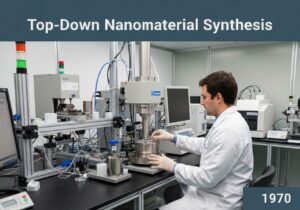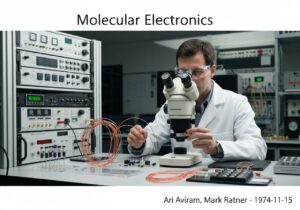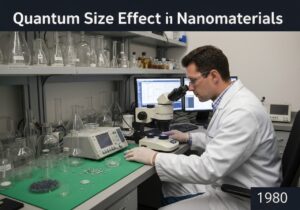
Biodegradable electronics integrate transient materials designed to decompose naturally after use, minimizing electronic waste accumulation. These devices employ organic semiconductors, bioresorbable metals, and polymers that dissolve under environmental conditions or within biological systems. Applications span from medical implants that safely dissolve post-treatment to environmental sensors that leave no toxic residues. Material selection balances performance with controlled degradation rates, ensuring functionality during operation and predictable breakdown afterward.
This is our latest selection of worldwide publications and patents in english on Biodegradable Electronics, between many scientific online journals, classified and focused on transient electronic, bioresorbable substrate, enzymatic degradation, microbial degradation, hydrolysis degradation, biodegradable encapsulation, silk fibroin, cellulose nanofiber, polylactic acid, polyhydroxyalkanoate, biodegradable conductor, biodegradable semiconductor, magnesium conductor, PEDOT:PSS and dissolution kinetic.
Skin-Conformal Hydrogel-Based Electroencephalography Electrodes with Surfactant-Reorganized PEDOT:PSS
Published on 2025-10-19 by Ji-Yoon Ahn, Jihyeon Oh, Mi-Ri An, Kun-Woo Nam, Jin-Whan Kim, Sung-Hoon Park @MDPI
Abstract: Electroencephalography (EEG) electrodes require low impedance, high biocompatibility, and long-term performance. Conventional Ag/AgCl wet electrodes achieve low impedance but suffer from dehydration and skin irritation, whereas dry electrodes often induce discomfort or exhibit high impedance. To address these limitations, this study engineered a hydrogel-based electrode by incorporating PEDOT:PSS and the nonionic surfactant Triton X-100 into an acrylic acid hydrogel matrix. The flexible acrylic [...]
Our summary: This study presents a hydrogel-based EEG electrode incorporating PEDOT:PSS and Triton X-100. The electrode demonstrates low impedance, high biocompatibility, and mechanical compliance. It shows comparable performance to traditional Ag/AgCl electrodes in EEG measurements.
Hydrogel, Electroencephalography, PEDOT:PSS, Biocompatibility
Publication
Co-Degradation of Coal and Sawdust for Enhanced Microbial Methane Production
Published on 2025-10-17 by Liu Zhu, Wangjie Diao, Zeguang Tang, Yi Liu, Yanxin Gu @MDPI
Abstract: Microbial coal gasification is a highly promising bioenergy technology, yet its efficiency is often constrained by the highly polymeric structure of coal. This study explores a novel approach to enhance methane production from low-rank coal through anaerobic co-degradation with sawdust. Using Xilinguole lignite as the substrate, we systematically assessed how wood chip supplementation influences microbial degradation efficiency and community dynamics. Results demonstrated that co-degradation sig[...]
Our summary: This study investigates the co-degradation of low-rank coal with sawdust to enhance methane production. Results show that a coal-to-wood chip ratio of 4:1 significantly increases methane yield compared to coal alone. The addition of sawdust improves microbial community dynamics and promotes efficient degradation of complex compounds.
Co-degradation, Methane production, Microbial community, Bioenergy recovery
Publication
Effects of 3D Printing Parameters on the Coating Performance of Chinese Lacquer on PLA Substrates
Published on 2025-10-17 by Yi Xie, Yuemin Feng, Alin Olarescu, Yushu Chen, Xinyou Liu @MDPI
Abstract: This study systematically investigates the influence of 3D printing parameters on the surface morphology and coating performance of polylactic acid (PLA) substrates finished with traditional Chinese lacquer. PLA specimens were fabricated using fused deposition modeling (FDM) with varying print speeds, layer heights, and infill densities, followed by natural lacquer coating and controlled curing. Surface roughness, gloss, adhesion, and wear resistance were evaluated through standardized tests, wh[...]
Our summary: This study examines how 3D printing parameters affect the coating performance of PLA substrates with Chinese lacquer. Layer height significantly influences surface roughness, gloss, adhesion, and wear resistance. The findings suggest that integrating traditional lacquer with FDM technology enhances the quality of 3D-printed finishes.
3D printing, PLA substrates, Chinese lacquer, surface morphology
Publication
Thermal insulation polyurethane composite thin film and preparation method therefor
Patent published on the 2025-10-16 in WO under Ref WO2025214270 by ZHE JIANG SHICHUANG OPTICS FILM MFG CO LTD [CN] (Wei Yong [cn], Zhang Hongsheng [cn], You Jianyong [cn], Zhou Liangzhong [cn])
Abstract: Disclosed in the present invention are a thermal insulation polyurethane composite thin film and a preparation method therefor. The preparation method comprises the following steps: under an inert atmosphere, uniformly mixing citric acid and polyethylene glycol 600, heating and stirring, adding an acidic catalyst, and stirring to react until the weight of the system no longer changes, obtaining a polyester polyol; in DMF, under the action of a catalyst, uniformly mixing the polyester polyol and [...]
Our summary: The invention discloses a thermal insulation polyurethane composite thin film and its preparation method. The method involves mixing citric acid and polyethylene glycol, followed by a series of reactions to create a polyurethane elastomer solution. The final product features high transparency and self-healing functionality.
Thermal insulation, polyurethane composite, preparation method, thin film
Patent
Silk coating of musical instruments and musical instrument components and accessories
Patent published on the 2025-10-16 in WO under Ref WO2025217387 by TRUSTEES OF TUFTS COLLEGE [US] (Omenetto Fiorenzo [us])
Abstract: The disclosure herein concerns stringed instruments, string picking implements, bows, silk-coated bows, and related methods. Musical instrument component properties can be influenced by a number of factors that result in the alteration of the component's behavior (e.g., vibrational) which determines its playing characteristics and tone richness. One such factor is its coating or impregnation with silk fibroin.[...]
Our summary: This content discusses the application of silk coating on musical instruments and their components. It highlights how silk fibroin can influence the vibrational properties and playing characteristics of stringed instruments. The methods and effects of silk-coated bows and accessories are also addressed.
silk coating, musical instruments, vibrational properties, silk fibroin
Patent
Damage-responsive self-healing concrete
Patent published on the 2025-10-16 in WO under Ref WO2025217013 by DREXEL UNIV [US] (Khaneghahi Mohammad H [us], Farnam Yaghoob [us])
Abstract: The present invention relates to concrete compositions and methods of making a concrete composition having self-healing properties, including a cementitious matrix impregnated with a plurality of biofibers, wherein the biofibers comprise: a polymer fiber core comprising one or more polymers selected from the group consisting of polyester, polyethylene, polypropylene, polyvinyl alcohol, polyamide, aramid, polyacrylonitirile, cellulose, polyurethane, and combinations thereof; a crosslinked hydroge[...]
Our summary: The invention describes a concrete composition with self-healing properties. It includes a cementitious matrix embedded with biofibers and a crosslinked hydrogel layer. The biofibers consist of a polymer core and a protective (co)polymer shell.
self-healing concrete, biofibers, cementitious matrix, hydrogel
Patent
Emerging Microbial and Enzymatic Approaches for Sustainable Antibiotic Biodegradation in Livestock Manure to Mitigate Water Pollution Risks
Published on 2025-10-14 by Zimin Gao, Jian Tan, Mohd Faheem Khan, Gaurav Chugh, Olaf Schmidt, Lu Ma, Dengpan Bu @MDPI
Abstract: The extensive use of antibiotics in animal husbandry leads to the release of unmetabolised residues and the dissemination of antimicrobial resistance genes (ARGs) in manure, posing environmental and public health challenges. Conventional treatment technologies, including hydrolysis, photodegradation, and phytoremediation, are often constrained by incomplete mineralisation, high cost, and environmental variability. Biocatalytic and microbially mediated processes are increasingly recognised as sus[...]
Our summary: This review discusses sustainable microbial and enzymatic strategies for antibiotic biodegradation in livestock manure. It highlights the challenges posed by conventional treatment methods and the potential of biocatalytic processes to mitigate water pollution risks. Advances in enzyme engineering and microbial consortia are emphasized as promising solutions for effective manure management.
Antibiotic biodegradation, microbial consortia, enzymatic processes, water pollution
Publication
The Esterase Gs Derived from Geobacillus sp. JM6 Exhibits Hydrolytic Activity on the PET Model Substrates
Published on 2025-10-11 by Shuyan Duan, Zhaoyi Wei, Yushan Wei, Xiaoyue Cai, Yixuan Liu, Ruiran Fan @MDPI
Abstract: The continuous increase in demand for polyethylene terephthalate (PET) has drawn global attention to the significant environmental pollution caused by the degradation of PET plastics. Exploring new PET-degrading enzymes is essential for enhancing the degradation efficiency of PET, and esterases and lipases with plastic degradation capabilities have become a focal point of research. In this study, we utilized the ultra-efficient mutant FASTase of the PET-degrading enzyme IsPETase, derived from Id[...]
Our summary: The study investigates the hydrolytic activity of esterase Gs from Geobacillus sp. JM6 on PET model substrates. Gs shows excellent degradation of bis(2-hydroxyethyl) terephthalate (BHET) but lacks thermal stability. The combination of Gs and MHETase can completely hydrolyze BHET, offering new resources for PET plastic degradation.
Esterase, PET degradation, hydrolytic activity, molecular docking
Publication

























